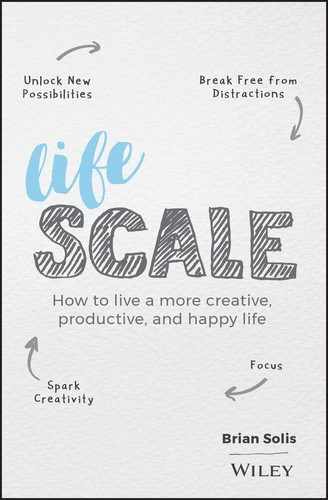Chapter 13
Visualize
Don't Stop Believing; Visualize That Feeling
“Learn to see, and then you'll know that there is no end to the new worlds of our vision.”
–The Teachings of Don Juan by Carlos Castaneda
Visioning is the process of generating images of desired outcomes. The idea is to make the images so vivid that they act as intensely compelling motivators, inspiring belief in our ability to perform to the high level we've envisioned.1 The practice of mental visioning is common in sports training, with athletes encouraged to create a movie in their heads of performing well. You visualize what success looks and feels like, as if you're an actor stepping into the role of the life you desire. Once you see vividly in your mind's eye the goal you're aiming for, and the process of achieving it, you can't unsee it. Visioning is turning positive thinking into a story of success.
There's no limit to the creativity of our imaginations, and there's no reason to limit the ways in which you exercise your imagination.
There are many established methods of visioning. I'm going to focus here on the ones I found most engaging and helpful. I hope you will try them, but you should also explore other sources if you're intrigued. As Carlos Castaneda says, there's no limit to the creativity of our imaginations, and there's no reason to limit the ways in which you exercise your imagination.

I do want to make one cautionary observation about the way visioning is sometimes characterized. The power comes not from envisioning just a positive outcome and, having done so, expecting that it will manifest itself. The power comes from also envisioning the process of achieving the outcome and motivating us to keep working toward the goal. A good visioning practice includes creating an action plan. The detailed vision of what you want to achieve and how you will do so leads to invaluable realizations about what the journey will require. It helps you anticipate challenges you'll encounter and prepare for them. It also allows you to play out various scenarios and select from them the path you're going to follow.
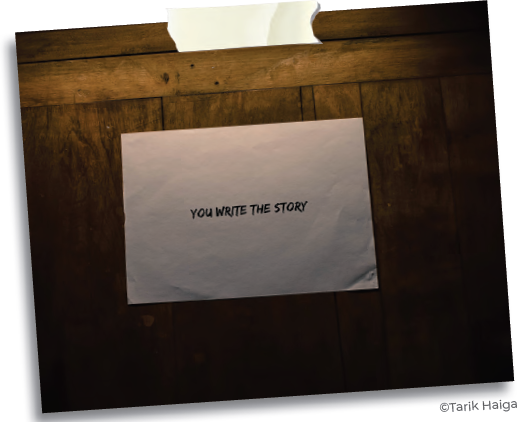
I first learned about the remarkable power of envisioning how a journey will unfold through working on my book X: The Experience Meets Design. I hired former Pixar artist Nick Sung to help me learn the Disney/Pixar storyboarding process. I wanted to investigate how storyboarding could be used to help companies understand their customers' needs, desires, and life experiences better and serve them more thoughtfully. Ultimately, I used the Disney/Pixar methods to create a visual story of an ideal day in the life of customers. Companies I've taught the process to have found it incredibly helpful in discovering ways to innovate and offer new products and services and more delightful experiences.
I found the process so inspiring that I decided to reboot the entire X project, drawing on the lessons I'd learned in visual communication to make the book a novel kind of reading experience that emulated a mobile device on paper, much more visually alive and immersive than my prior books.
The process taught me so much about how visualizing a story allows you to anticipate all sorts of twists and turns events might take, and discover ways you can shape a story to make it more captivating. It also gives you a preview of what those experiencing the story will be going through, highs and lows, and how they can best prepare for inevitable setbacks, as well as helping to believe in the desired outcome.

I can't help but mention that storyboarding contributed greatly to the success of my hero Walt Disney. He invented the practice in the 1920s, when he developed the Mickey Mouse shorts Plane Crazy and Steamboat Willie. He turned it into a true art form for crafting Snow White,2 and the practice quickly became essential in the planning of all forms of movies.
I mention storyboarding because it exemplifies putting visualization in action; it is about all the steps of the journey—for an animated film, literally moment to moment—and learning how believable and thrilling that story can be.
I now engage in a process of visualization for almost every project I take on.
In one way, shape, or form, I now engage in a process of visualization for almost every project I take on. I begin with a vision of the desired outcome and then develop a roadmap that outlines how to get there. If you're interested in doing that and think you'd like to give it a try, I encourage you wholeheartedly. Don't worry if you think you don't have the artistic talent needed for it. As Eric Goldberg,3 Supervising Animator for the Genie character in Disney's Aladdin, says, “A great storyboard artist isn't necessarily Michelangelo.”
Even very rough sketches are just fine for the purposes of lifescaling. To see how effective even the simplest stick figure drawings can be for working out ideas, you could check out Dan Roams' book The Back of the Napkin and online tutorials on his website Napkin Academy. To learn the storyboarding process, you can find a wealth of tutorials online.
First step is to write a description of the future state you want to achieve with a particular project or life goal.
I want to introduce here instead the process for visualization that has become my go-to method. The first step is to write a description of the future state you want to achieve with a particular project or life goal. To do that, assemble your work from the values and purpose exercises for inspiration. Now, choose a goal to envision. One I did this for was to come up with the concept for my next book, which had become such a struggle. The articulation of the concept and a visualization for it are now sitting on the easel next to my desk.

© Pimpak
Now, write a vivid description of the outcome you want to achieve. This can be as short or long as necessary to articulate your vision with enough detail. A good gauge of it being detailed enough is that someone who knew nothing about your aims for this endeavor would be able to envision the outcome themselves by reading it. To clarify, I'll share the example that drew me into this practice. I learned about it in a funny way—because of my love of bacon. Yes, bacon.
For my birthday, a friend who knew me very well signed me up for a year of Bacon Club, a gift that just kept on giving throughout the year. Each month, I'd receive a different selection of gourmet bacon and each month, I grew more curious about the company sending it. The packaging was clever, and the bacon “All-Stars” refrigerator magnet and the Pocket Book of Bacon that came with the membership were brilliantly illustrated, creative, and actually informative.
I decided to learn about the company, Zingerman's.4 It's a family of small food-related companies and entrepreneurial ventures located in Ann Arbor, Michigan. After clicking around the site, and ordering more goodies from several of their companies, I learned that one of the ventures, ZingTrain, is a consultancy that helps teach entrepreneurs and executives “Zingerman's model.”5 I further learned that the company employs almost 700 and generates over $55 million annually.
ZingTrain offers public and private seminars on a range of business-related topics, ranging from customer service and leadership to marketing and HR. After reading more, I stumbled across this line:
The “Zingerman's model” begins with our belief in the power of Visioning.
How unexpected. I needed to know more, and digging a little further into the site, I found a wonderful description of the Zingerman visioning process, offered by Ari Weinzweig, co-founding partner of the company. He describes how visioning has been a core driver of the company's success and describes the features of a good vision description this way:6
A vision is a picture of the success of a project at a particular time in the future.
A vision is a picture of the success of a project at a particular time in the future. A vision is not a mission statement. We see those as being akin to the North Star, a never-ending piece of work that we commit to going after for life. It also isn't a strategic plan—which is the map to where we want to go. A vision is the actual destination. It's a vivid description of what “success” looks and feels like for us—what we are able to achieve, and the effect it has on our staff. We start our planning work with a draft of a positive vision of the future.
An effective vision needs to be:
- Inspiring. To all that will be involved in implementing it.
- Strategically sound. That is, we actually have a decent shot at making it happen.
- Documented. You really need to write your vision down to make it work.
- Communicated. Not only do you have to document your vision, but if you want it to be effective you actually have to tell people about it, too.
Weinzweig also shares an actual example the company used to launch a new initiative in 2005 that's been very successful.
A Thursday evening Farmer's Market in the parking lot of Zingerman's Roadhouse—The Vision:
Throngs of people are milling around the Roadhouse parking lot on this Thursday, amazed and excited at the abundance of locally produced goods and services ranging from several varieties of tomatoes to handmade soap and artisan crafts, to herbs and plants, plus Zingerman's items—cheese from the Creamery, breads from the Bakehouse and the ever-energetic Roadshow crew caffeinating all the vendors and customers. Every vendor is selling the best of what they are growing or producing. There's a tangible truth patrons have come to trust—that all these products have a story and none of them traveled far to get here. Tents and awnings cover the stalls, creating a colorful and festive mood. There are 15–20 vendors at the West Side Farmer's Market so it's accessible and maintains variety but remains magnetic and welcoming.
The Market continues to provide customers with the best products available and serves as a catalyst for community development by offering an educational component and a local music scene. We have space reserved for weekly acts, including local musicians, demonstrations and other activities. Several people recognize the Roadhouse chefs selecting vegetables from the Market's vendors for their weekend's menus. The Market is a family event, where parents bring their children to shop for fresh produce and enjoy a snack at our picnic tables. Guests are thrilled with the produce, the chance to visit with neighbors, and best of all, connect with the farmers who actually grow their food.
This year, the planning committee is generating support throughout the business community. Local businesses hang posters about the Market and participate in promotions. These companies recognize the potential for the Market to draw additional patrons to the area, enabling the Market to become a more self-sustaining entity.
The Market planning committee operates under an inspiring mission statement and is taking steps toward making it a fiscally independent operation. The Market manager is working closely with the Zingerman's liaison to ensure organization and success, from honing job descriptions to developing and proposing paid Market positions. We have a great group of vendors working together who are already excited to build on these successes for next year. Visions and action steps are laid out for the coming years at our annual Market debrief.
Weinzweig attests, “It's pretty much exactly what happened when we started the season for the Market,” and he says this process has helped the company create success after success that he believes would not have been possible without the inspiration and the clarity of the vision.
Make it realistic, but also fantastical. Make it ambitious, but attainable. Make it romantic, but also practical. And whatever you do, make it heartfelt.
The key takeaways are: Make it realistic, but also fantastical. Make it ambitious, but attainable. Make it romantic, but also practical. And whatever you do, make it heartfelt.
Go ahead and write your vision now. Then come back here and we'll take the next step.

Bring Your Vision to Life in Images
Okay, now that you have your vision articulated, it's time to visualize it by actually picturing it, and creating a vision board. This is a visual representation of your life goals that includes images and perhaps also words or phrases to inspire you. There's no one way to do this. Some people clip pictures from magazines and add inspiring words in their handwriting or with cutouts or printed out from their computers. Others, like me, create a digital board using pictures from around the web. Make yours any way you want; after all, this process is about inspiring creativity!
Perhaps this strikes you as a silly exercise—it's viewed that way by plenty of people, and you can find plenty of criticism of the process online. If creating the board were the endpoint of this process, I would be critical too. Vision boards shouldn't be considered a sort of magical totem that will conjure up whatever is pictured on them. But they do have power if they are used to motivate you to take the steps you need to realize your vision.
I was skeptical when I first heard about vision boarding, even though I have used a form of them in my work with companies, to help them craft new experiences for their customers or employees and rally people around the mission. For instance, following the exercises of establishing values and defining purpose, teams would then collaborate to visualize desired outcomes. The process of visualization can help people see and agree on what success looks like. Doing so, brings people together to create a common roadmap that connects their work and goals to results.
I had never used the practice in my own life however. But then my wife and I went through a traumatic experience that left me feeling desperate about ever achieving a goal that was one of the most important to me ever in my life. I'd like to briefly share the story, because the process of creating a vision and action board was so powerful for me and my wife, and I think I would be remiss if I didn't share it.
My wife and I had spent several years trying to adopt a baby. At the beginning, we stayed hopeful, even though we lost out on a number of promising opportunities. We felt sure we'd eventually be successful. But after three devastating opportunities in a row that seemed like definite prospects fell through, we were losing our faith, resolve and more. Something had to change. We then created a vision board depicting the life we would lead with our new baby and defining the actions we would take differently to get there. Let me be clear; we did not embark on this expecting the universe to “give” us a baby because we were envisioning that gift; we were not at all leaving it to the universe to deliver. We saw the process of vision boarding as a means of healing and restoring our will and belief.
We covered our board with pictures that depicted the road to a happy family, and surrounded the pictures with words of encouragement at important stages. Not only was the process therapeutic, as hoped, it gave us renewed resolve and we persevered.

I'm beyond delighted to say the envisioned day finally arrived for us. We welcomed a newborn baby girl into our lives. Her name is Monroe and she has graced us with even more joy than we ever could have hoped for.
She is the reason I believe in the power of vision boards.
Using images of desired outcomes to inspire us to pursue goals is nothing new, or new age. The practice goes back deep into the ancient human past,7 when our ancestors painted the striking images of wild animals that are still so vibrant on the cave walls of Lascaux and Chauvet in France and the Cave of Altamira in Spain, and many others. Experts believe some cave paintings were visualizations of hunts, perhaps part of a practice of “hunting magic”8 that was intended to increase the abundance of prey. Maybe those cave dwellers believed in magic; we can't really know. But vision boarding doesn't at all rely on a belief that it evokes some sort of supernatural force to bring about what we desire. I will say that it does have a sort of magic, however, a magic of igniting hope and belief; a magic of motivation.
Now let me share with you the vision board I created to inspire me about writing this book. I constructed it around my pillars of purpose. Those pillars, as a reminder, are . . .
- Liquidity
- Fatherhood and Marriage
- Health(ier)
- BFF
- Creative
- Connected
- Thankful
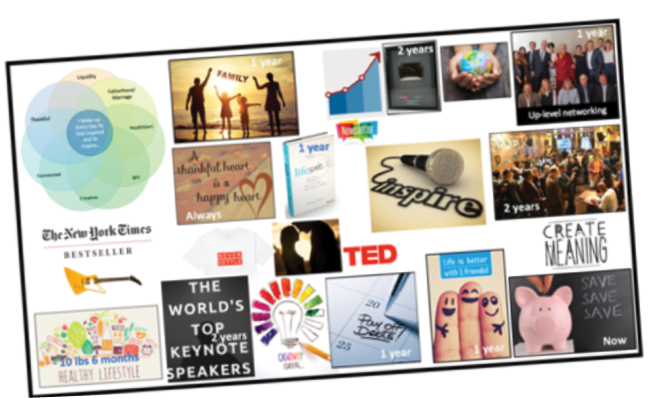
Allow me to explain what's on this canvas and why.
From left to right, row by row, hopefully this makes sense and resonates with you.
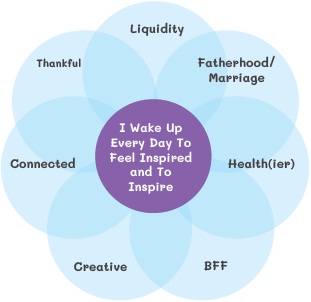
This is a visualization of my pillars of purpose. They serve to remind and inspire me why I'm here and what lifescale is built upon.
 This is my (envisioned) family as I see it, standing on a beach, happy, loving and loved, and symbolic of the intentional time we will spend together without distractions or being consumed by overcommitting to work or extracurricular products.
This is my (envisioned) family as I see it, standing on a beach, happy, loving and loved, and symbolic of the intentional time we will spend together without distractions or being consumed by overcommitting to work or extracurricular products.
 I've not been the healthiest of people, especially as I tried to focus and stay afloat professionally against so many distractions that I allowed in. I see myself fit, eating better, with stronger endurance.
I've not been the healthiest of people, especially as I tried to focus and stay afloat professionally against so many distractions that I allowed in. I see myself fit, eating better, with stronger endurance.
 I see myself channeling flow and creating with greater purpose and potency.
I see myself channeling flow and creating with greater purpose and potency.
 I picture my guitars gaining my attention again and I can see that one day, I will finally record my music and offer it to the world.
I picture my guitars gaining my attention again and I can see that one day, I will finally record my music and offer it to the world.
 I have two big goals tied to the release of this book, beyond sharing this moment with you, to help make lifescale a shared movement. I plan on launching a newsletter, a podcast, and a video series aimed at sharing your story and the stories of others, their challenges, and how they're lifescaling. I see the subscriptions and the views growing. The plaque on the right is the memento YouTube sends creators once they hit 100,000 subscribers. I will be there within one-to-two years.
I have two big goals tied to the release of this book, beyond sharing this moment with you, to help make lifescale a shared movement. I plan on launching a newsletter, a podcast, and a video series aimed at sharing your story and the stories of others, their challenges, and how they're lifescaling. I see the subscriptions and the views growing. The plaque on the right is the memento YouTube sends creators once they hit 100,000 subscribers. I will be there within one-to-two years.
 Mother Earth needs us now more than ever. I am making a personal commitment to live greener every day and to join efforts in raising awareness. This will take shape by joining the board of a startup aiming to make bold moves to have strong impact.
Mother Earth needs us now more than ever. I am making a personal commitment to live greener every day and to join efforts in raising awareness. This will take shape by joining the board of a startup aiming to make bold moves to have strong impact.
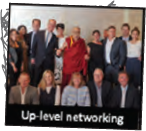 Today, I work behind a screen, on planes, and on stages. I rarely network. My growth and reach stalled as a result. I'm making the conscious investment to get out and join organizations that force me out of my comfort zone. I aim to make meaningful connections and add value to the right community.
Today, I work behind a screen, on planes, and on stages. I rarely network. My growth and reach stalled as a result. I'm making the conscious investment to get out and join organizations that force me out of my comfort zone. I aim to make meaningful connections and add value to the right community.
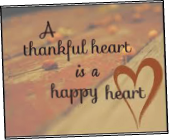 Sometimes with all of the pressure, distraction, and a never-ending list of things to accomplish, I forget to be grateful, to exude appreciation. Sometimes, I've also been short-tempered or self-destructive as a result. Not anymore. I will stay kind, humble, and thankful.
Sometimes with all of the pressure, distraction, and a never-ending list of things to accomplish, I forget to be grateful, to exude appreciation. Sometimes, I've also been short-tempered or self-destructive as a result. Not anymore. I will stay kind, humble, and thankful.
 This is an early draft of the book cover. I stared at this every day. This is finally a reality.
This is an early draft of the book cover. I stared at this every day. This is finally a reality.
![]() I picture a future book hitting the official best-seller lists.
I picture a future book hitting the official best-seller lists.

Through my work, I aim to inspire personally and professionally and add meaning and significance to everything I create and do. I will also expand my speaking goals to reach conferences, events, and audiences outside of my usual scope to introduce lifescaling to those who can benefit from it. I picture my speaking and lifescale events catapulting my work onto more powerful stages and eventually becoming my sole career.
 I picture an engaged community of people learning and sharing lifescale stories and helping one another, where this book and those communities become a catalyst for real world events and workshops.
I picture an engaged community of people learning and sharing lifescale stories and helping one another, where this book and those communities become a catalyst for real world events and workshops.
![]() I see myself speaking at TED and other influential forums like it about lifescaling and the power of creativity against distraction.
I see myself speaking at TED and other influential forums like it about lifescaling and the power of creativity against distraction.
 I envision a stronger, more consistent connection with important friends who add value to my life and I to theirs. I see my life without friendships that sap my energy or distract me from my lifescale.
I envision a stronger, more consistent connection with important friends who add value to my life and I to theirs. I see my life without friendships that sap my energy or distract me from my lifescale.
 I grew up with debt. I watched my parents take on debt. It was normal to spend money I didn't have on things I didn't need. It was just a way of life. Stuff will no longer weigh me down. I foresee paying off debts and saving money for the things in life that contribute to more quality time and living with family, friends, and professional investments.
I grew up with debt. I watched my parents take on debt. It was normal to spend money I didn't have on things I didn't need. It was just a way of life. Stuff will no longer weigh me down. I foresee paying off debts and saving money for the things in life that contribute to more quality time and living with family, friends, and professional investments.
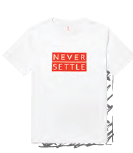 I've spent my entire life never believing I was good enough to achieve or earn great things. I'm blessed and fortunate for what I do have today. I've compromised however too greatly in my life and it has cost me opportunities for growth and limited the availability of meaningful choices. I see new opportunities and more powerful choices presenting themselves to me as a result of the actions I take and my intentional dedication to not compromise any longer.
I've spent my entire life never believing I was good enough to achieve or earn great things. I'm blessed and fortunate for what I do have today. I've compromised however too greatly in my life and it has cost me opportunities for growth and limited the availability of meaningful choices. I see new opportunities and more powerful choices presenting themselves to me as a result of the actions I take and my intentional dedication to not compromise any longer.
 On top of it all, I see love, affection, intimacy and friendship. I lived too long not knowing or appreciating the importance of closeness. I was selfish. I needed this book for a lot of reasons. I see myself growing closer to and fonder of a significant other, an important person, who will never question my intentions, devotion or passion. I also feel that love, fire and companionship in return, without question or doubt.
On top of it all, I see love, affection, intimacy and friendship. I lived too long not knowing or appreciating the importance of closeness. I was selfish. I needed this book for a lot of reasons. I see myself growing closer to and fonder of a significant other, an important person, who will never question my intentions, devotion or passion. I also feel that love, fire and companionship in return, without question or doubt.
This is not meant to be a template for you to follow. It's just the style that worked for me. Have fun with this. Let your creative juices flow. Embark on an image and quotation discovery quest. It's a wonderfully cathartic and stimulating process. You feel inspired just seeing and reading things that connect with you and your goals. They can come from anywhere that inspires you, but the three most common sources I found in researching the experiences of others were favorite magazines and websites as well as searching keywords on Pinterest and images on Google.
Display your board in a place where you can survey it briefly every day. It will remind you where you are going and why.
Display your board in a place where you can survey it briefly every day. It will remind you where you are going and why. You're going to experience highs and lows as you pursue the goals you've portrayed and your board will keep you focused, driven, and inspired. Every time you stare at it, you are performing micro-visualization exercises that directly or indirectly influence your behavior and activities toward its manifestation.
Do Not Stop There.
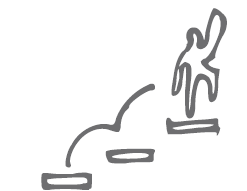
Lights. Camera. Action. Visualizing Your Vision Onto the Lifescale Screen
Now it's time to craft your action plan. Trust me, this is vital, and you will be so pleased when you begin checking off the steps you've listed. There is no better motivation than making progress.
Did you know that research shows people who write out their goals and action steps are 80 percent9 more likely to achieve them? Experts agree that this is a critical step in the manifestation of your goals. In a fascinating study,10 as reported by professor of psychology and life coach Neil Farber, college graduates who visualized having their dream job were found to be less likely to get that job than those who visualized a plan for how and where they are going to apply. Farber also writes about another study that found that golfers and tennis players who visualized themselves training were more successful than those who focused their visualization on winning.
People who write out their goals and action steps are 80 percent more likely to achieve them.
Action planning is the process of determining the specific steps you need to take to achieve each goal.11 I've included a sample action plan template below. In creating such a plan, you can also visualize your action steps. Neil Farber came up with the term action board for this.

For each goal you've visualized on your board, prepare an action list of incremental steps that are attainable and measurable. These steps should be clearly defined, as opposed to vague ideas.12
Start by writing down the major milestones on your way. You will shortly list a set of the smaller steps that will get you from one to the next of these.
Consider roadblocks or challenges you will face and how to overcome them. Here, think with an open mind about how you can turn problems into challenges and challenges into opportunities.
Review necessary skills, capabilities, resources, or external support you may need.
Define ideal, but realistic, timing for each outcome (target start and realization dates).
Prioritize them and create a timeline.
Create a to-do list of smaller steps for each action to make strides toward your goals.
Get Input
As the Beatles sang, we all need a little help from our friends. Everyone embarking on lifescaling needs friends who will support and positively challenge them. Now that you've articulated your goals and crafted your plan, you can share them easily with others, seeking advice from a core group of people you trust. Think of them as a board of directors for your lifescaling journey.
Everyone embarking on lifescaling needs friends who will support and positively challenge them.

You've got to choose these people carefully. You don't want any cynicism; that's not the kind of challenge you're looking for. You want to limit this to people you know want to see you succeed and who are themselves positive thinkers. Ideally, you've offered them a thoughtful ear and support when they've needed it. Investor Warren Buffet, one of the most successful people of our time, advises, “Surround yourself with people who push you to do better. No drama or negativity. Just higher goals and higher motivation. Good times and positive energy. No jealousy or hate. Simply bringing out the absolute best in each other.”13
Surround yourself with people who push you to do better.
The insight and inspiration people will share can be wonderfully energizing. I had a striking experience of this as I was working on the book.
It was the first day of the fall season and I was lucky enough to have arrived in Lisbon, Portugal, to experience it. The skies were blue, the weather was more summer than fall, but perfect, and a dear friend of mine was also visiting the city. We were both part of a closely knit group of friends who had once seen quite a bit of one another. The last time all of us had gotten together, though, was several years before in London, and we knew then that it would be years, if ever, before we could all be in the same place together again. So far, that's proved true. While I've seen everyone individually at one time and in one country or another, we haven't managed to meet all at once. As for this friend, it had been four years since I'd seen her.
In that time, she had temporarily placed her startup on hold and traveled the world to explore its beauty while also exploring the beauty within herself. She'd also written two books along the way. But what served as the centerpiece for our conversation this particular evening, other than the enchanting scenery that is Lisbon, were the awe-inspiring stories she shared about how in her travels, she set out to embrace spirituality, mindfulness, meditation, and learn and practice the art of creative flow.
One year earlier, I wouldn't have had anything to contribute to the conversation. But by this time, I was well into my lifescaling journey. I was a little hesitant to share my story of having become so overwhelmed by distraction and disconnected from my creativity. She'd been public with her journey, sharing videos, pictures, and posts about what she'd learned, her struggles, her adventures, and the exotic places her quest for meaning had taken her. I, on the other hand, had yet to tell anyone outside my closest personal circle about lifescaling. But her story of reigniting her own creativity was so in sync with the journey I was on that I went ahead and told her all about my discoveries.
She made sharing easy, conveying that she was as genuinely curious about my journey as I was of hers. The conversation consumed a long evening and I left even more inspired about the road I was on and with a wealth of great insight to carry with me.

Some friends and family members you share with may not be supportive of some of your plan. You might hear some doubts and cautions may be offered. Or some people might seem to be just supporting you without really thinking deeply about what you've shared. Don't be discouraged. Opening up to feedback is a great strengthener of our creative muscles. It's one of the hallmarks of what Carol Dweck calls the growth mindset. I'm sure you will also get lots of great encouragement and tips about resources that can be helpful, offers to connect you with people who can assist you, and suggestions of possibilities you might otherwise never have imagined.
Opening up to feedback is a great strengthener of our creative muscles.
I've shared that one of my lifescaling goals has been to do more networking. I decided to use the writing of this book as one occasion for that, and I reached out to a number of people to get feedback. They offered many wonderful suggestions about research to read and shared their own stories of creative struggle, which was all so helpful in honing the concept and discovering some new thinkers whose work has been profoundly mind-opening.
Select those you share with carefully, but trust that by opening up your vision to them, they will help you see it, and achieve it, in invaluable ways. You are the author of the book of your life, but all authors need good editing!
